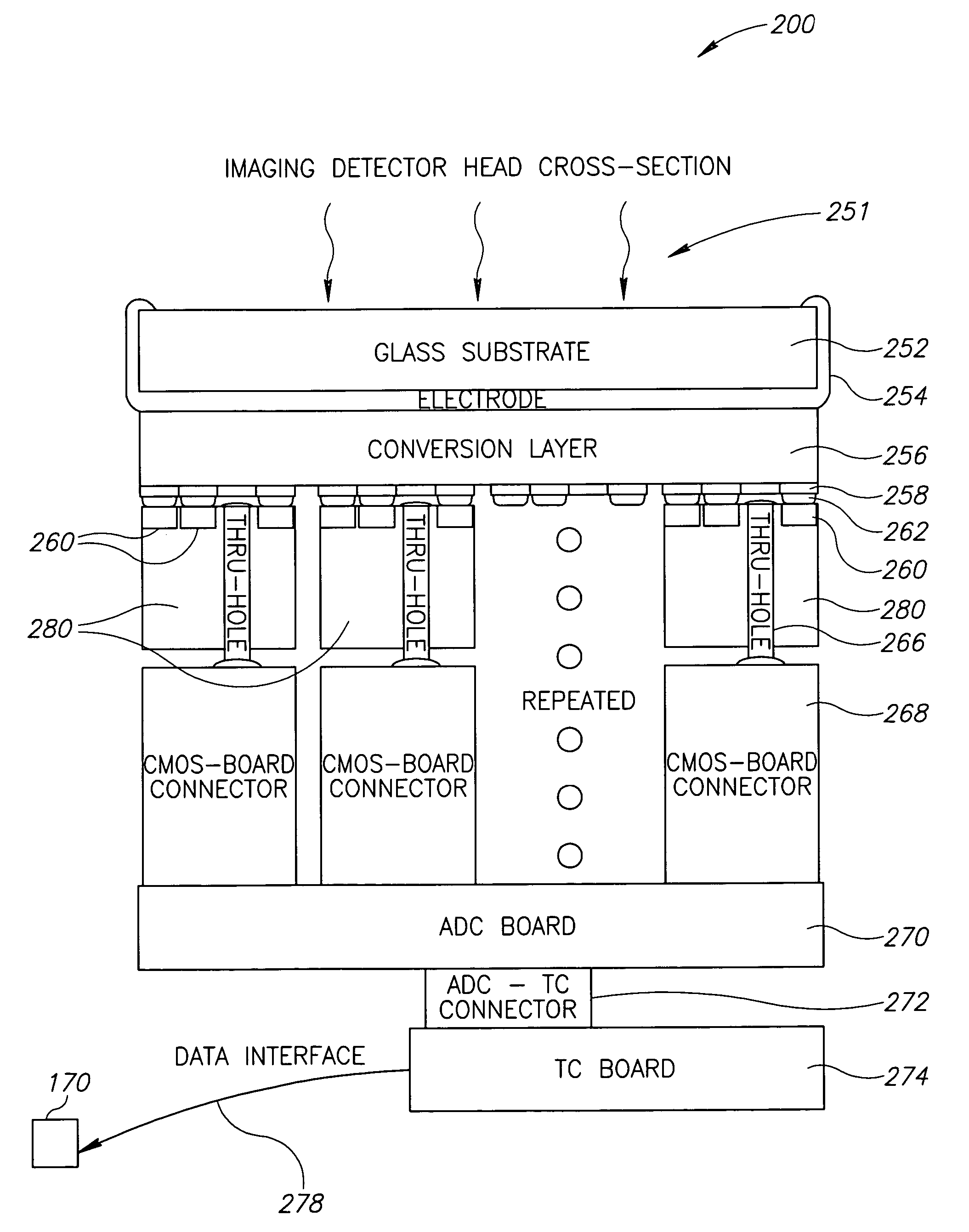Two-dimensional CMOS-based flat panel imaging sensor
a flat panel imaging and sensor technology, applied in the field of two-dimensional flat panel imaging sensors, can solve the problems of limiting patient access, increasing the size of the device, and affecting the patient's experience, and achieves the effects of less expensive, easy re-configuration, and highly developed manufacturing infrastructur
- Summary
- Abstract
- Description
- Claims
- Application Information
AI Technical Summary
Benefits of technology
Problems solved by technology
Method used
Image
Examples
Embodiment Construction
[0058] In what is described herein, “detector”, “sensor” and “imager” and words derived therefrom such as “sensing”, “detecting” and “imaging” will be used interchangeably. Unless the contrary is indicated, there will be no attempt to distinguish between these terms.
[0059] A flat-panel sensor of a direct-conversion type is herein proposed, wherein the sensor overcomes the problems inherent in both prior art indirect-conversion and direct-conversion sensors discussed above. The sensors discussed herein include high-speed CMOS-based readout circuitry. In the planar sensors of the present invention, incident X-rays are directly converted into electric charges which are then amplified and stored in each pixel of the sensor. The sensor incorporates a large-area CMOS tile array, each tile having four side abuttability and inter-tile distances of about a pixel. Four side abuttability as used herein is defined as a construction wherein tiles may be placed along the four borders of a given ...
PUM
 Login to View More
Login to View More Abstract
Description
Claims
Application Information
 Login to View More
Login to View More - R&D
- Intellectual Property
- Life Sciences
- Materials
- Tech Scout
- Unparalleled Data Quality
- Higher Quality Content
- 60% Fewer Hallucinations
Browse by: Latest US Patents, China's latest patents, Technical Efficacy Thesaurus, Application Domain, Technology Topic, Popular Technical Reports.
© 2025 PatSnap. All rights reserved.Legal|Privacy policy|Modern Slavery Act Transparency Statement|Sitemap|About US| Contact US: help@patsnap.com



